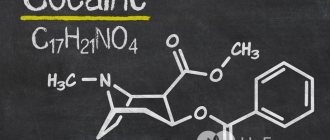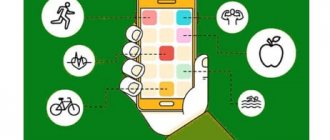- General information
- History of creation
- Effect on the body
- Physical symptoms
- Cognitive changes
- Effects of amphetamine
- Composition of amphetamine
- The harm of amphetamine
- Consequences of long-term use
- Danger of consumption methods
- Amphetamine overdose
- Main reasons
- First aid
- Health care
- Consequences of lack of help
- Lethal dose
- How to terminate? How to leave?
- Otkhodnyak
- Withdrawal
- How to relieve withdrawal symptoms?
Attention! Drug use causes irreparable harm to health and poses a danger to life!
General information
Amphetamine is a central nervous system stimulant that is synthetic in nature. It is also able to suppress appetite - anorexigenic properties. The mechanism of action is based on the release of neurotransmitters such as serotonin, dopamine, and norepinephrine into the general bloodstream.
Refers to psychoactive substances that, when used for a long time without medical supervision, cause addiction. In some countries, drugs containing amphetamine as an active substance may be prescribed to treat people with attention deficit hyperactivity disorder, sleep disorders or narcolepsy.
The circulation of the substance, its derivatives and medicines based on it is controlled by legislation at the national and international level.
Chemical formula of amphetamine and methamphetamine.
The effects of these drugs are very similar, but the effects of “meth” are stronger and more pronounced. The group of psychostimulants includes both methamphetamine and amphetamine - the difference between these drugs lies in their chemical structure. Methamphetamine is produced by adding a methyl radical to amphetamine. This enhances the narcotic properties of methamphetamine. But, at the same time, the toxicity of the drug increases, its production becomes more labor-intensive and painstaking.
- Amphetamine formula: C9H13N or C6H5-CH2-CH(NH2)-CH3. Chemical name: β-methylphenylethylamine or 1-phenyl-2-aminopropane.
- Methamphetamine formula: C10H15N or C6H5CH2CH(CH3)NHCH3. Chemical name: N-methyl-alphamethylphenylethylamine (N-methyl-1-phenylpropan-2-amine).
Drug jargon. Synonyms of the word “amphetamine”, common among drug addicts, slang names for amphetamine:
- Fast
- Welding
- Nimble
- Alarm
- Vitamin
- Mef
- Synthetics
- Speed
- AIDS
- Black beauty
- Aper
History of creation
The first synthesis work was carried out in 1887. They were carried out by the Romanian chemist Lazar Edeleanu. Official medicine showed attention to the substance in the 20s as an alternative to ephedrine in the treatment of asthma.
Psychoactive properties were discovered by biochemist Gordon Alles (USA) in 1929. Two years later, a drug under the trade name “Bendzedrin” entered the pharmaceutical market. It was intended to relieve swelling of various etiologies. In 1937, amphetamine salts appeared in pharmacies. The tablets were positioned as a means of eliminating symptoms of narcolepsy, depression, Parkinson's disease, and weight loss. The first cases of using the substance without medical indications were recorded in 1936. But the connection between uncontrolled use and amphetamine psychoses was proven later, in 1958.
During World War II, military personnel in Great Britain and the United States regularly received a tablet form of amphetamine. Soldiers of Japan, Germany - methamphetamine. After the end of hostilities, production of the substance increased sharply.
In the late 50s and early 60s, scientists experimentally came to the conclusion that the substance causes psychological dependence. This led to the fact that in 1970 in America, amphetamine was included in the list of strictly controlled substances. Recognition of the danger at the international level took place a year later with the adoption of the Convention on Psychotropic Substances in 1971.
Removing amphetamine from the body
Detoxification, which is carried out by drip infusion of certain medications, is a safe and quick way to remove the drug and its breakdown products from the body. The main thing is that detox therapy is carried out under the supervision of a narcologist.
To remove the drug from the body at home, they resort to help:
- Drink plenty of fluids;
- Diuretic pharmaceuticals;
- Gastric lavage;
- Cleansing enema.
But we must not forget that safe and complete cleansing of the body from a prohibited substance can only be carried out in inpatient drug treatment clinics.
Effect on the body
Amphetamine with long-term uncontrolled use has a negative effect on internal organs and systems. The person also experiences cognitive impairment. All processes develop in parallel.
Physical symptoms
The intensity depends on age, duration of use in non-therapeutic dosages, and the presence of chronic diseases. The first disorders are observed in the cardiovascular system. Most often it is high or low blood pressure. Men experience problems with erection.
Other violations include:
- loss of appetite, weight loss;
- acne;
- decreased visual acuity;
- dry mouth;
- increased sweating;
- medical rhinitis;
- twitching of limbs.
Some physical symptoms of amphetamine use do not appear immediately. The severity increases with increasing periods of use.
In the long term, addicts experience organic brain damage. The teeth also begin to crumble.
Cognitive changes
The initial use of amphetamine causes a feeling of euphoria and a surge of strength. But over time, when the brain loses the ability to independently produce dopamine and serotonin, the initial positive effects disappear. For an addict, the world around him loses its colors and becomes uninteresting.
Constantly increasing the dosage leads to a slower response to external stimuli. Efficiency decreases, solving problems that require mental effort becomes more difficult. Difficulties in communication are noted. Due to overexcitation of the nervous system and increased heart activity, sleep is disturbed, insomnia develops, and a person becomes emotionally unstable.
Usage
There are almost twice as many men who use amphetamine as women. Who uses the drug and for what:
- Women always try to watch their figure and can take amphetamine to lose excess weight. It also helps get rid of fatigue;
- This drug can be taken to increase vitality. People involved in sports can take to cope with increased physical activity;
- The drug is also taken to enhance one's attention. During a business trip, it can be taken to combat sleep;
- The main group is drug addicts. People who also use other types of drugs;
- Teenagers can also try amphetamine simply to experience unusual sensations, without thinking about the harmful consequences of use.
Drug effect (feelings)
Amphetamine intake occurs in a cyclical manner. After the first dose:
- attention is sharpened, concentration increases;
- mood improves;
- thought processes proceed faster, new information is remembered better;
- movements become sharp, but precise, and speech is fast and clear;
- a person ceases to experience embarrassment and internal discomfort in an unfamiliar environment.
However, the achieved effect lasts for a short period of time. To restore sensations, the dose is repeated. Developed insomnia forces you to take the drug every hour for 2 or 3 days. This is followed by deep sleep, which often lasts about 24 hours.
How to help a person
If a person has taken a drug, it is necessary to induce vomiting to clear his stomach. Next, you should use activated carbon. If a person did not have time to provide first aid, hospitalization in a hospital is not ruled out.
If a person has a desire to take the drug, it is worth removing all dangerous objects that may be stored in your home away from it. Make sure that his breathing is uniform and that he does not bite his tongue. In case of vomiting, it is worth placing the person on his side to avoid the possibility of swallowing masses.
It is worth remembering that drugs like amphetamine give a person energy. But due to this, the body’s own energy is actively burned and completely exhausted.
Signs of a drug addict
Addicts have constricted pupils, unfocused, “running” gaze. If you have a bad habit, the skin on your face becomes pale, unhealthy, and acne appears. The person looks exhausted and tired outwardly. If amphetamine is administered intravenously, wounds and scars form at the injection sites.
You can also recognize a drug addict by behavioral changes. He becomes aggressive and irritable. Mood often changes even without reason. The world around me is not interesting.
Signs of hair dryer use: signs, symptoms and treatment
Determining that a loved one is addicted to amphetamines can be quite difficult.
But, if the thought arises that the behavior of someone nearby has changed dramatically, and there are no compelling reasons for this, it is worth taking a closer look at the situation. Few people associate character changes with drug use.
But often the source of these changes is the hair dryer. To find out exactly how things really are, you should have a clear idea of what the signs of using a hairdryer are.
It is necessary to take this issue seriously so as not to waste time, and, if necessary, begin to resolve the issue of removing a person from drug addiction as early as possible.
Amphetamine belongs to the group of psychostimulant drugs. It blocks inhibition processes in the central nervous system. This leads to a change in behavior towards increased activity. Under the influence of a hair dryer, breathing and heart rate increase, the need for rest disappears, and the mood becomes euphoric.
The effect of amphetamine is not limited to its effect on the central nervous system and brain. It penetrates into all organs and, over time, causes a lot of serious diseases in the drug addict’s body.
When the hairdryer powder is sniffed, the euphoric effect occurs within 15 to 20 minutes. When this drug is administered intravenously, a change in behavior is observed within a few seconds.
The degree of pupil enlargement depends on the dose taken and the time interval after taking it. Typically, this change is noticeable within the first 7 hours after drug administration. There is a reaction to light, but its speed is lower than usual and the degree of pupil diminution is less than normal.
A person who systematically takes a hairdryer has a distant expression on his face. It shows no emotion. The look seems frozen. Over time, rigidity in facial expression may appear. Eyebrows and eyes lose their brightness.
Hair loses its shine, becomes brittle and dry. They may begin to fall out severely.
If a drug addict prefers to snort amphetamine, then this method leads to drying of the nasal mucosa and the formation of ulcers on it. You may develop the habit of sniffling. Nosebleeds often occur.
The oral mucosa of a drug addict has a brighter color than that of an ordinary person. Periodontal disease and caries often develop. Dark plaque may appear on the roots of the teeth.
Veins appear on the hands, the capillary network is clearly visible. Women's hands may look shrunken.
The gait becomes springy, the walking rhythm is too fast. Swinging movements of the arms are often observed.
The timbre of the voice changes, it becomes both loud and dull. When high, a drug addict talks quickly and a lot. His speech is logical with a clear structure. A phenologically dependent person talks more than he listens.
The addict sweats a lot. This is especially noticeable during night sleep. The pillow may be completely wet in the morning and have a specific smell.
The behavior of a drug addict often becomes completely different from what it was before. It seems that the person suffers from a split personality. Under the influence of drugs, he is cheerful, overly talkative, and energetic.
Character change
An experienced drug addict, over time, becomes too aggressive and picky. Living with him turns into a real nightmare. He is rarely at home, and appears there most often when the high has passed and he needs to sleep off.
Some tension and nervousness appear in the character. Eternal discontent, restlessness, aggression - these traits are inherent in the majority of phenologically dependent people.
They cease to feel a sense of compassion for others, are indifferent to the pain of others, and can be cruel. If a hair dryer is used during adolescence, then there is a high probability of developing a tendency to criminal acts.
Changing your sleep pattern. Sleep becomes unstable after using a hairdryer. A drug addict who is high can sleep for only a couple of hours, and in between doses he sleeps for 10 to 20 hours straight.
Amphetamine addicts become fidgety and cannot concentrate on one task. They also have difficulty sitting still for long periods of time.
Irresponsibility becomes the drug addict's priority trait. He makes promises and completely forgets about them. At the same time, he is never ashamed.
The reason for frequently changing the phone number may be debts for drugs or fraudulent manipulations in order to obtain funds.
- Money problems and frequent job changes
Buying drugs requires a lot of money. A dependent person is in constant search of money. He takes out debts and doesn't pay them back. He often sells things from home, demands money from relatives, inventing various excuses. In the worst case scenario, the addict is able to steal money or valuables to sell.
An amphetamine addict is often late for an appointment. The reason for this is loss of orientation in time. For drug addicts, time moves more slowly. Sexual characteristics
Afetamine causes sexual liberation, but can also negatively affect erection.
The fact that a drug addict constantly lies becomes obvious over time. At first, all his invented stories are taken at face value. Thus, a drug addict can justify his long absence from home and lure money to buy drugs.
- Inappropriateness of classes
An aphmetamine addict is often busy with unproductive tasks that he never completes. It can be anything - unfinished repairs, abandoned purchases in the store, disassembled and unrepaired equipment. Any business started is abandoned halfway.
At the same time, the addict can spend hours pointlessly drawing, shifting things from place to place, and moving furniture. Women can apply makeup for several hours in a row. Food oddities Under the influence of amphetamine, a person loses his appetite.
He loses interest in food and reduces the number of meals he eats. As a result of such a diet, weight loss occurs. The person's general appearance becomes haggard. This condition is inherent in the initial or moderate degree of drug addiction.
Subsequently, the addict begins to eat more often, and is even able to gain weight. Cravings for sweets
After amphetamine exposure, the body requires large amounts of glucose. This need influences the food addiction of the drug addict. Sweets are consumed in incredible quantities. Sweets, jam, chocolate, and even regular sugar are used.
The hair dryer causes severe dry mouth. The drug addict practically loses saliva, and he tries to drink as much as possible.
Changes in the appearance of a drug addict are associated with changes occurring inside his body. Damage to the kidneys and liver causes a sallow complexion. Non-standard speech is associated with brain damage. Toxins accumulating inside organs lead to damage to the skin, gums, and hair.
An amphetamine-dependent person often takes help for colds. Moreover, these can be either real colds associated with a decrease in immunity as a result of taking the drug, or a febrile state resulting from withdrawal.
Frequent signs of hair dryer use are anorexia, exhaustion, and vegetative-vascular dystonia. Mental problems can be so severe that they can cause suicidal thoughts. Somatic illnesses
In a phenologically dependent drug addict, almost all internal organs are affected over time. A sharp decrease in immunity causes immunodeficiency states. There is a high probability of contracting AIDS and hepatitis. Damage to the cardiovascular system leads to heart failure and heart attacks. Due to the composition of the drug, the liver is necessarily affected.
The final diagnosis may be cirrhosis. Deterioration of vision, vascular damage, and convulsive syndrome are observed. Kidney function is impaired. If your loved ones' health has deteriorated and any of these symptoms are observed, you should take this seriously.
Many people are interested in the question of how to determine amphetamine use using tests. This can be done by purchasing a special test at the pharmacy that determines the presence of the drug in the urine.
You can also donate urine or blood, having previously agreed with the laboratory about additional research. The presence of amphetamine can be determined from hair samples.
If the suspicion of taking amphetamine is confirmed, then the main thing is not to panic in this situation, but to draw up a clear plan to help the drug addict. To do this, it is best to contact a special clinic for advice.
Drug addicts need comprehensive assistance from doctors, psychotherapists, psychologists and social workers. Treatment is carried out in stages: first, detoxification and recovery procedures are performed, followed by psychotherapeutic sessions and support group meetings, and at the end the patient is sent to rehabilitation.
It is this sequence that allows you to get rid of the drug at the body level, overcome psychological and physical dependence, and return to an active social life (and not to drug addiction). Depending on the severity of the disease, treatment is carried out entirely in a hospital, in a day hospital or on an outpatient basis. Rehabilitation activities can also be organized at home or in a special closed center.
Composition of the drug
Street amphetamine is produced from officially approved substances - precursors. Most often these are benzaldehyde, nitroethane, esters of phenylacetic acid. There may be others.
The composition of the drug is different for each manufacturer. The percentage of the actual psychotropic substance ranges from 10 to 80. The samples that were confiscated by the police contained caffeine, ephedrine, and also acetylsalicylic acid or paracetamol.
Sometimes street amphetamine is diluted with ballast substances - powder or talcum powder. Impurities pose a threat by any route of administration. But especially with intravenous injection.
What to expect after use
After taking the drug, various symptoms appear when it is discontinued (especially if the drug was taken for a long time).
At first, from 9 hours to 4 days, a severe blow to the body occurs. There is a persistent desire to use the drug in order to relieve the consequences of withdrawal: paranoia, depression, psychosis.
From 1 to 10 weeks there is a withdrawal syndrome. The desire to take the drug gradually subsides. Sleep is already normalizing. But the mood is still depressed and the feeling of anxiety does not go away. The desire to take the drug may be weak and increasing.
From 10 weeks to six months, the extinction phase occurs. The mental state gradually returns to normal. In large companies, during celebrations or parties, there may be a desire to break loose. Especially when drinking alcohol.
Consequences of long-term use
Addicted individuals develop chronic fatigue syndrome due to decreased sleep quality. To replenish the volume of hormones responsible for the feeling of pleasure, during the period without the next dose, they begin to eat and sleep more.
As the period of use increases, even a rare rest does not give the desired result. Because of this, psychosis and depression develop. Dysfunctions of the cardiovascular system are often diagnosed, leading to death.
Women with long-term addiction are less likely to become pregnant. But even if conception occurs, the child is born with a large number of pathologies. They are at high risk of developing mental illness.
WHO ABUSES AMPHETAMINE
OFTEN THE VICTIMS OF THIS DRUG ARE:
- Girls who want to quickly lose weight and get rid of chronic fatigue;
- People who use this narcotic drug to improve their mood, get rid of physical and mental fatigue, and increase stamina;
- Those who use amphetamine during long business trips to combat sleep and improve alertness and concentration;
- People addicted to other drugs;
- Teenagers who were encouraged to try amphetamine for a thrill, but were not warned about the onset of addiction.
Danger of consumption methods
In about half of the cases, illegal amphetamine is liquid in consistency. But it is unstable, so they often strive to obtain salts. The following forms are presented on the illegal market:
- pills;
- syrup;
- capsules;
- powder;
- crystals;
- "wet" amphetamine.
The listed forms determine the methods of use. Any of them is dangerous. This is explained not only by the effect of the substance, but also by the low quality of the raw materials.
Intranasal
It involves rubbing amphetamine into the nasal mucosa and inhaling the powder. Some drug addicts administer the gelatin capsule rectally. Organoleptic properties - smell, taste, unpleasant.
This method of consumption is dangerous because the acuity of smell is impaired. With prolonged use, drug-induced rhinitis develops, burns of the mucous membranes, and nasal membranes are damaged. Neoplasms are often diagnosed. As a result of rectal administration, erosions develop, which eventually turn into ulcers. All consequences are irreversible. Therapy only allows for remission.
Oral
This method involves administering the drug orally by swallowing gelatin capsules. They also use solutions, rub them into the gums or lick them off. Due to the toxicity of the composition, the mucous membranes of the esophagus and intestines are damaged. Continued use and lack of treatment leads to the development of an ulcerative process.
Injectable
Intravenous administration of a narcotic drug. Often produced in unsanitary conditions, which leads to abscesses and thrombophlebitis. Local necrosis or tissue death may develop. The risk of contracting HIV and hepatitis of viral etiology increases.
Addiction
Amphetamine is classified as a drug with moderate narcotic potential. People who use it occasionally and in therapeutic doses do not develop dependence. But if you take the drug more than once every 7-10 days and neglect the dosage recommended in the official instructions, then after 2-4 weeks a psychological craving for repeated use will arise.
Each time the post-intoxication state becomes more and more severe, and after a few months a withdrawal syndrome forms, indicating the presence of physical dependence on amphetamine. The development of drug addiction is also facilitated by the experience of using other psychostimulants, mixing the drug with alcohol and narcotic substances, and intravenous administration of an amphetamine solution.
Development of addiction
One of the signs of amphetamine abuse is the development of tolerance to its effects. After 1-2 weeks of systematic drug use, the stimulating effect becomes less pronounced or disappears completely. To return pleasant sensations, users increase the dose of the drug.
Gradually, the amount of amphetamine consumed increases 2-3 times, and the frequency of use increases to several times a day. To minimize the loss of the substance through the digestive tract, drug addicts begin to inject it into the veins. Often after such a procedure, visual and auditory hallucinations and paranoid ideas occur.
When used regularly, amphetamine causes mental dependence. At the physiological level, its formation is explained by the fact that the drug increases the activity of dopamine in the brain centers responsible for the feeling of pleasure and the development of reward system reactions. This system controls behavior through the perception and “remembering” of positive states that arise in response to any action.
In this way, behavior is formed aimed at searching for and using amphetamine, because its entry into the body creates a positive state - euphoria, high performance, and sociability. At the psychological level, addiction is manifested by a person’s desire to experience amphetamine “intoxication” again and again.
Withdrawal syndrome
After the cessation of the drug's effect, depressed mood, sadness and anger (dysphoria), lethargy, weakness, headaches, anxiety and a strong desire to reuse amphetamine occur. With regular and long-term use, all these symptoms become more pronounced and lasting. They indicate the development of withdrawal syndrome - the main sign of physical dependence on the drug. Its causes are the depletion of the dopaminergic, noradrenergic and serotonergic systems of the body.
Withdrawal syndrome in amphetamine addiction is manifested by the following symptoms:
- fatigue, feeling overwhelmed
- insomnia at night and drowsiness during the day
- hypotension (low blood pressure)
- physical weakness, rapid depletion of intellectual functions
- depression, tearfulness, increased anxiety
- self-blame ideas, suicidal thoughts and actions
- conspicuous self-harm (self-harm to attract attention)
- anger, irritability
- psychosis with delirious stupefaction, psychomotor agitation
Withdrawal usually occurs within 2-3 weeks after stopping the drug. The existence of physical dependence on amphetamine has been questioned by some researchers. They attribute the above symptoms to the consequences of sleep and food deficiency resulting from amphetamine addiction.
How long does amphetamine last?
Amphetamine use often takes the form of a cycle similar to the binge drinking behavior of alcoholics. Many drug addicts even have their own recipes. For example, 100 mg immediately and 50 mg every three hours, or vice versa, first taking a large dose of 300 mg and then taking the same dose again 12 hours later. This can last from one day to several days.
In slang, taking a drug without sleep is called a “marathon.” After the amphetamine wears off or after its effects cease, the so-called withdrawal begins. The person feels bad, he is irritable, weak, his psyche is very labile, hallucinations and hysterics are possible. After which the person falls asleep, and his sleep can last up to 2 days.
Of course, with such use, it becomes increasingly difficult for a person to hide his addiction. He begins to be irresponsible in his duties, is late or skips work and school, as a result of which he may be fired or expelled. And, since he will most likely seek intoxication in amphetamine, moral degradation is possible, to the point that the person begins to steal, sell drugs, and engage in prostitution.
Drug overdose
The drug addict's pupils dilate, blood pressure rises, and heart rate increases. When taking a particularly large dose, a seizure may occur, which is accompanied by convulsions. It is difficult to coordinate movements. Behavior becomes unpredictable, with elements of aggression, and hallucinations may appear. Body temperature often rises. The skin turns pale. The most severe consequences are cardiac arrest, renal failure, and metabolic acidosis.
Main reasons
Overdose is a condition that occurs when a health-threatening dose of a drug is consumed. Even those who take amphetamine for a long time are not able to control the volume of the drug administered.
The causes of the condition are related to the development of drug addiction. There are three stages in its formation. The first stage is where the body adapts. To obtain the effect, the addict gradually increases the dose. By the second, tolerance increases, reaching a peak point. In the third stage, internal organs practically fail. At this point, adaptation is reduced to a maximum, and the doses taken increase. Those. an overdose develops.
First aid
If you notice signs of an overdose in a drug addict, you should immediately call an ambulance. Before her arrival, the person is kept conscious by being given ammonia to sniff while maintaining a conversation. If there is no reaction, place it on a hard, flat surface and observe carefully - there is a high probability of tongue retraction.
In case of overdose, signs of lack of air are often observed. To restore difficulty breathing, unbutton the top buttons of the shirt, you can open the window and give Corvalol according to age recommendations.
Health care
The patient must be admitted to a specialized hospital. Therapy is carried out aimed at relieving symptoms. Amphetamine antagonists are administered. Forced diuresis accelerates drug clearance.
Further treatment is aimed at restoring metabolic processes. Psychological or mental assistance is required.
HELP FOR AMPHETAMINE OVERDOSE
"ADDICTION. BEFORE IT'S TOO LATE..."
There are general guidelines that should be followed to help a person after taking amphetamine. First, you need to induce vomiting in the drug addict or wash out his stomach, then give him activated charcoal. If an overdose occurs and timely assistance was not provided, you need to seek help at a hospital.
During an attack from amphetamine, it is necessary to remove all sharp and prickly objects away and prevent biting your tongue. If vomiting begins, it is necessary to place the patient on his side, preventing vomit from entering the respiratory tract.
If you see that the addict’s condition is rapidly deteriorating, be sure to seek help from a doctor! Untimely assistance in case of an overdose can cost your loved one their life!
It is almost impossible to achieve freedom from amphetamine use on your own, as a strong psychological dependence arises!
To return to a healthy life, you need to seek help from professionals. Our rehabilitation team, represented by psychologists and narcologists, is ready to provide qualified assistance to drug addicts. On the website you can leave a request for a call and we will definitely contact you and help!
Do you have any questions or need specific help?
Be sure to contact our
How to terminate
Amphetamine has profound negative effects on the body. The goal of therapy for overdose is to stop this process. For this purpose, several groups of drugs are prescribed. The first is benzodiazepine drugs, which relieve tension in the central nervous system. The second is adrenergic blockers to lower blood pressure. The third is barbiturates, which eliminate convulsions. The fourth is drips with isotonic liquid. This composition promotes the rapid removal of amphetamine and other dangerous compounds.
When the effect of the psychostimulant begins to gradually subside, symptoms of amphetamine withdrawal syndrome or withdrawal symptoms appear. Namely:
- headache;
- state of anxiety;
- sudden changes in heart rate and blood pressure;
- suicidal mood;
- dizziness;
- difficulty breathing, even if the person is at rest;
- attacks of tachycardia;
- convulsive syndrome;
- increased sensitivity to external stimuli;
- lack of coordination;
- decreased sleep quality.
Withdrawal syndrome develops 6–9 hours after the last dose. The clinical picture is observed from 7 to 70 days. It all depends on the dose and timing of use. The development of symptoms is the reason for repeated drug use and the subsequent development of addiction.
Before medical detoxification, the drug user must take some independent measures. First, stop contact with environments where drugs are common. Next, three or five meals a day and proper sleep are restored. Physical activity is recommended.
WITHDRAWAL SYNDROME, AMPHETAMINE WITHDRAWAL
UNKNOWN CONSEQUENCES.
There is an amphetamine withdrawal syndrome with characteristic phases that occurs in people who take the drug for a long time:
- “Strong Impact” lasts at least 9 hours, but no more than 4 days. During this period, the addict strives to take amphetamine as quickly as possible to relieve the oncoming attack of psychosis, paranoia and release their depression.
- Withdrawal syndrome begins from one week to ten. During this period, a person can reduce the dosage of amphetamine, reduce the number of doses, as a result of which his sleep will normalize and his anxiety will go away. At times, you may feel the urge to start using drugs again.
- The extinction of desire occurs after 10 weeks to 6 months. During this time, the addicted person’s physical and psychological state returns to normal as before the onset of addiction. However, the craving phenomenon may be present for many years to come. Failures are possible, especially if you fall under the bad influence of friends or acquaintances who have a drug addiction.
Post-effects (Otkhodnyak)
When the effect of the psychostimulant begins to gradually subside, symptoms of amphetamine withdrawal syndrome or “withdrawal” appear. Namely:
- headache;
- state of anxiety;
- sudden changes in heart rate and blood pressure;
- suicidal mood;
- dizziness;
- difficulty breathing, even if the person is at rest;
- attacks of tachycardia;
- convulsive syndrome;
- increased sensitivity to external stimuli;
- lack of coordination;
- decreased sleep quality.
How to spot signs of use
The main signs of amphetamine use include psychological disorders in a person. People who have overdosed usually have good spatial orientation and a clear mind.
Signs of an overdose include:
- cardiopalmus;
- blood pressure levels rise sharply;
- cardiovascular failure;
- seizures, as in epilepsy;
- pupil dilation.
Symptoms of psychosis include: manifestations of paranoia, hallucinations (all types), a person’s thinking is similar to delusions. At the same time, a person’s orientation remains at the usual level, as does his memory.
Data
- Phenamine is a central nervous system stimulant. It's like action cocaine
and
methamphetamine
. - Effects of amphetamine: euphoria, energy, speech stimulation, anxiety, increased libido, decreased hunger and signs of fatigue.
- This substance damages the brain and can lead to anxiety, depression and psychosis.
- Non-medical drug use, production and sale are illegal.
How long does it take for the effect to occur?
When amphetamine is administered intravenously, the effect occurs immediately, the duration and effect are higher than with other types of administration, but there is also a risk of becoming addicted
increases significantly.
If a patient experiences an overdose or deterioration in health while taking a drug, the body must be immediately cleansed
using droppers. Intravenous injections will help remove toxic substances from the body and improve well-being.
Amphetamine makes you immune to fatigue, and many people report a surge of energy. Actually this is not true. The body on amphetamine dulls the feeling of fatigue. People who frequently use amphetamine, in addition to psychological problems, often have heart problems, as it functions at the limit.











